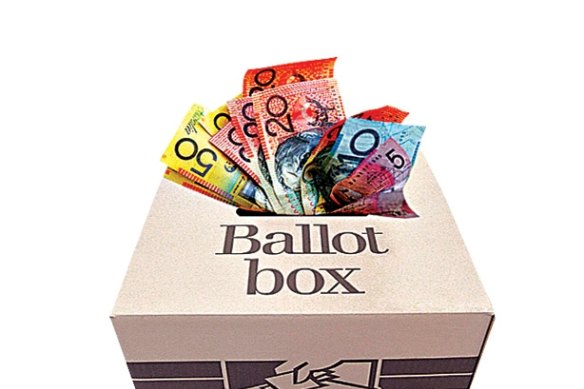This was published 8 months ago
$4.35m splurged on Brisbane council election for very little change
More than $10 million was spent on local campaigns in the Queensland council elections this year, new Electoral Commission of Queensland data shows.
Almost half of that was spent in Brisbane, Australia’s largest council and the most expensive media market in the state.
In the capital – the only local government area where major political parties run tickets – $4.35 million was spent. Statewide, the figure was $10,462,257.42, according to returns lodged with the ECQ.

More than $10 million was spent during this year’s Queensland council elections.Credit: Graphics
And that total could increase. Electoral Commissioner Pat Vidgen said about 100 candidates were yet to lodge their returns from the March 16 polls.
The ECQ fined almost 100 candidates for failing to lodge election summary returns after the 2020 council polls.
“It’s important to note that even if a candidate hasn’t incurred any electoral expenditure or received any gifts or loans, the return must still be lodged,” Vidgen said.
“It’s great to see that all elected candidates have complied with this obligation,” he said, despite the high number who have not.
Griffith University political scientist Paul Williams said it was “disappointing” some candidates were failing to report.
“Perhaps the ECQ needs to expand its educative role,” he said. “Perhaps relevant acts of parliament could be amended to ensure all nominated candidates have completed integrity training.”
The only council outside the south-east corner of Queensland to feature in the top five was Mackay, where more than half a million dollars were spent.
“Disclosure of gifts and money spent during the election period provides transparency and ensures the integrity of the election process,” Vidgen said.
“The election summary return shows all electoral expenditure incurred for an election and is required, under the Local Government Electoral Act 2011, to be returned within 15 weeks of an election.”
The $4.35 million spent in Brisbane did little to change the status quo in City Hall.
Labor picked up one seat, Calamvale, from the LNP, which was offset by the Adrian Schrinner-led administration taking Wynnum-Manly from Labor.
The Greens also picked up a ward, claiming Paddington from the LNP.
Otherwise, it was victory across the board for the incumbent councillors.
Elsewhere in the south-east, the March election saw significant turnover at the top of the region’s 11 councils.
Gold Coast Mayor Tom Tate, Ipswich Mayor Teresa Harding, Lockyer Valley Mayor Tanya Milligan, Moreton Bay Mayor Peter Flannery and Toowoomba Mayor Geoff McDonald all kept their jobs, while Greg Christensen was defeated in the Scenic Rim by Tom Sharp.
Five other incumbent mayors – Mark Jamieson (Sunshine Coast), Graeme Lehmann (Somerset), Karen Williams (Redlands), Clare Stewart (Noosa), and Darren Power (Logan) – did not contest the election.
Former Speaker John Mickel, who is now an adjunct professor at Queensland University of Technology, said the biggest surprise to him was how little was spent in large, regional council areas.
“You would think that it would probably cost more out there, but it just goes to show what local name recognition can do,” he said.
“In some instances, it does badly.”